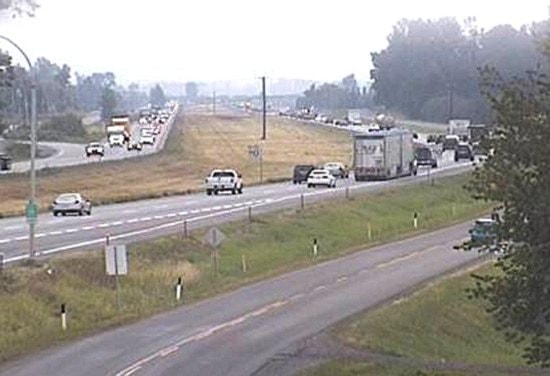by Paul Henderson, Black Press
The crash rate on Highway 1 between Abbotsford and Hope is on the rise, according to a six-month analysis of the provincial government’s experiment with increased speed limits on provincial highways.
The stretch from Whatcom Road to Hope is one of seven sections out of 33 in the province where the rate of speed increased and so did the crashes.
On 19 of 33 new speed zone sections, the crash rates were unchanged or down.
The speed limit on the stretch from Abbotsford to Hope went from 100 km/h to 110 km/h in 2014. Since then, average speeds increased, going from 116 km/h to 119 km/h for 85 per cent of drivers.
The rate of serious collisions also rose, although the B.C. Ministry of Transportation said driver inattention and driving too fast for the conditions were the major contributing factors for an increase in accidents on the 74-kilometre stretch of Highway 1.
Other portions of the seven routes where speed limits and crashes increased also included: Highway 1 from Hope to Boston Bar; Highway 3 from Hope to Coquihalla; and Highway 5A from Princeton to Merritt.
“Of particular interest, the data shows that we saw the crash rate increase on seven sections of highway where people were actually travelling slower,” Minister of Transportation and Infrastructure Todd Stone said in a press release issued last week. “This suggests again that there are many different factors that can lead to crashes and speed is only one of them.”
Stretches where this occurred included Highway 1 Boston Bar to Jackass Mountain, and Highway 7 from Agassiz to Hope.
In response to the study, over the next 12 months the ministry will post distracted driving reminders on existing dynamic messaging signs, and add “point duty wreckers” to clear crashes quickly to help relieve congestion when there are incidents.
And over the next 12 to 18 months, variable speed signs will be installed for use when congestion increases.
Overall, distracted driving remains the leading cause of crashes on the stretches of highway where the speed limits changed.
Between Nov. 1, 2014 and Oct. 31, 2015, 28 per cent of all crashes in the areas studied were primarily caused by distracted driving. Driving faster than the posted speed limit was a contributing factor in just two per cent of crashes.
